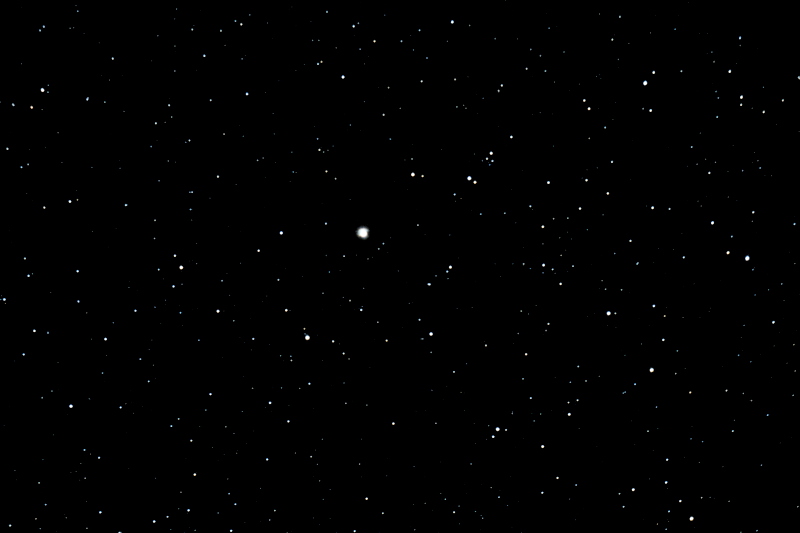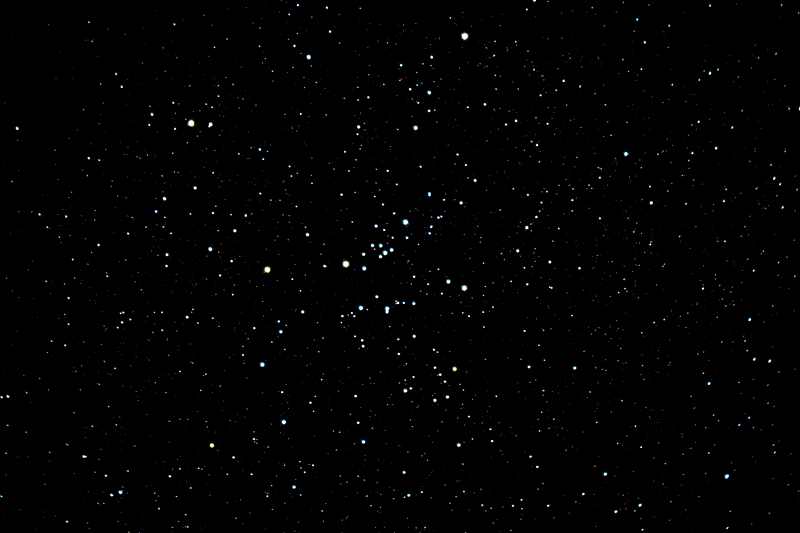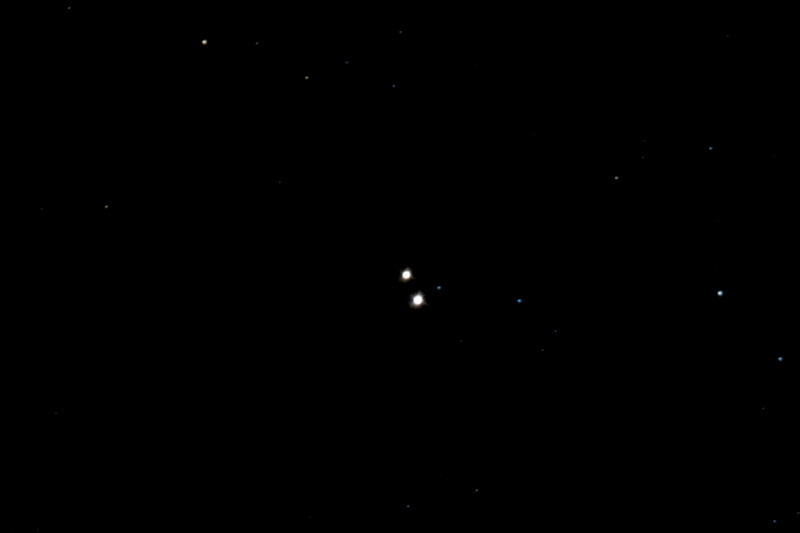Gift from IU; Imaging: Pluto, Eagle Nebula,
Messier open clusters, 61 Cygni, Ring Nebula
Posted: 18 September 2017
Cloudy skies returned on Wednesday, 13 September 2017. Thursday evening, 14 September, the wife and I had dinner with some executives from Indiana University, my alma mater. They surprised me (and one other alumn) with this special gift from the IU Department of Astronomy, a glass plate of Saturn taken in 1949:

Click or tap on image for larger version
On Friday, 15 September, we had our tenth special visit to Kitt Peak National Observatory for viewing through the WIYN 3.5-meter telescope. You can view my complete report here.
I had hopes of opening Cassiopeia Observatory Saturday evening, 16 September, but clouds and strong breezes began late in the afternoon. Sunday, 17 September, was mostly clear.
|
Open: Sunday, 17 September 2017, 2002 MST Temperature: 74°F |
Session: 1140 Conditions: Clear |
Equipment Used:
12" f/8 LX600 w/StarLock
2" 24mm UWA eyepiece
2" 2X PowerMate
2" 30mm eyepiece
Focal Reducer
Camera:
D7200 DSLR
iPhone 6s Plus
2005 MST: LX600 ON, StarLock OFF, High Precision OFF.
2010 MST: viewed Saturn, 102X. Nice view, but nothing to compare to last Friday's view of Saturn through the WIYN 3.5m telescope (check out my photo on page 2 of my WIYN report.
I then began preparing for the night's DSO imaging. Mounted the D7200 DSLR at prime focus and locked the primary mirror using a lock I'm testing. Focused on a bright star using the Bahtinov Mask.
2031 MST: Wi-Fi ON. Used SkySafari 5 Pro on my iPhone to GOTO the planet Pluto. 2036 MST: StarLock ON. This is a prime focus, StarLock autoguided, 1 minute, ISO 6400, White Balance 3570K image of the star field where Pluto should be:

I plan to take another image 24 hours later to show the motion of Pluto and positively identify the planet.
2040 MST: Wi-Fi OFF. I then added a focal reducer. This is M16 (Eagle Nebula) and the "Pillars of Creation", StarLock autoguided, 5 minutes, ISO 6400, WB 3570K:

I then took images of some Messier open star clusters for my Messier Catalog Astrophotography Album update. All were prime focus + focal reducer, StarLock autoguided, 30 seconds, ISO 6400, WB3570K:
M24

M25

M26

2125 MST: StarLock OFF. Viewed M26 (open cluster), 102X.
SYNCed on the star Deneb. Then mounted the DSLR at prime focus + 2X PowerMate. 2143 MST: Wi-Fi ON. Used SkySafari 5 Pro to GOTO the double star 61 Cygni. I had last imaged this fast moving double star system on 13 June 2017. In 2014 and 2015 I imaged the system to show its motion over one year:

I was curious to see if I could detect motion in a three month time span. Unfortunately, no motion was detected in tonight's StarLock autoguided, 10 seconds, ISO 1600, WB3570K, image:

when compared to the 13 June image.
2230 MST: Wi-Fi OFF, StarLock OFF. Viewed 61 Cygni, 81X.
Next, viewed M57 (Ring Nebula, planetary nebula), 81X. Mounted the iPhone 6s Plus on the 30mm eyepiece using the Levenhuk afocal adapter and using NightCap Camera took this image, Long Exposure, Light Boost, ISO 8000, 1/3sec shutter speed, 1 minute exposure):

Viewed M57, 102X.
2301 MST: LX600 OFF.
|
Close: Sunday, 17 September 2017, 2310 MST Temperature: 68°F |
Session Length: 3h 08m Conditions: Clear |
I have finally posted my photos of places we visited during our Total Solar Eclipse trip. You can see photos of Space Center Houston, US Space & Rocket Center, and the Von Braun Astronomical Society and observatory, Dyer Observatory, among other places here.
I have also updated our "Observatory Visits" with more details about those visits.
Comments are welcome using Email. Twitter users can use the button below to tweet this report to their followers. Thanks.
Cassiopeia Observatory Home Page
Copyright ©2017 Michael L. Weasner / mweasner@me.com
URL = http://www.weasner.com/co/Reports/2017/09/17/index.html
